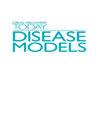Applicability of epithelial models in protein permeability/transport studies and food allergy
Q3 Pharmacology, Toxicology and Pharmaceutics
引用次数: 13
Abstract
Measurement of protein transport across the intestinal barrier might be a relevant approach in allergenicity risk assessment. Traditionally, studies on protein transport, were performed using stable cell lines cultured as a monolayer. One of the major advantages of these models is their relatively low price and easy handling. However, monolayers lack a physiologically relevant environment (presence of other cell-types and a mucus layer), which may have an effect on transport characteristics and thus correct prediction of protein allergenicity. This paper summarizes the most widely used epithelial models and discusses their benefits and limitations for measuring protein transport and allergic sensitization to food.
上皮模型在蛋白质通透性/转运研究和食物过敏中的适用性
测量蛋白质通过肠道屏障的运输可能是过敏原风险评估的一种相关方法。传统上,蛋白质转运的研究是用稳定的细胞系作为单层培养进行的。这些型号的主要优点之一是价格相对较低,易于操作。然而,单分子层缺乏生理上相关的环境(其他细胞类型和黏液层的存在),这可能会影响转运特性,从而正确预测蛋白质的过敏原性。本文总结了最广泛使用的上皮模型,并讨论了它们在测量蛋白质转运和食物过敏致敏性方面的优点和局限性。
本文章由计算机程序翻译,如有差异,请以英文原文为准。
求助全文
约1分钟内获得全文
求助全文
来源期刊

Drug Discovery Today: Disease Models
Pharmacology, Toxicology and Pharmaceutics-Drug Discovery
自引率
0.00%
发文量
0
期刊介绍:
Drug Discovery Today: Disease Models discusses the non-human experimental models through which inference is drawn regarding the molecular aetiology and pathogenesis of human disease. It provides critical analysis and evaluation of which models can genuinely inform the research community about the direct process of human disease, those which may have value in basic toxicology, and those which are simply designed for effective expression and raw characterisation.
 求助内容:
求助内容: 应助结果提醒方式:
应助结果提醒方式:


